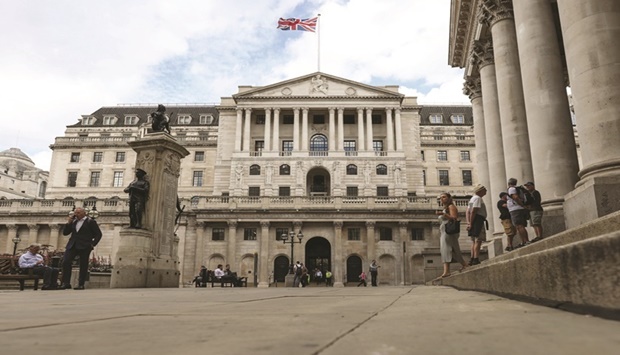The Bank of England is preparing to halt its almost £900bn ($1.2tn) quantitative easing programme, leaving the future of what has become a controversial crisis-fighting tool shrouded in doubt.
More than a decade after buying the first government security as part of an initial £75bn, three-month plan during the global financial crisis, the BoE will next week complete what could conceivably be the last round of purchases as inflation hots up.
The decision would make the BoE only the world’s second major central bank after Canada’s to halt its QE programme during the pandemic. With policy makers poised to raise interest rates in the coming months, it may become the first to start running down the massive holdings acquired during the virus.
That would be a watershed moment for global monetary policy with potential consequences for public finances should the removal of support push up the cost of borrowing for governments.
It might also turn out to be a milestone in the UK. Over the past few months alone, the tool has been criticised by current and former BoE officials, as well as lawmakers, who blame it for helping the rich by inflating asset prices without providing broader economic benefits.
And with the central bank opening the door to negative interest rates, policy makers may be more inclined to ditch QE as a go-to programme to stimulus the economy whenever needed.
“QE is now past its sell-by date and needs to be carefully and slowly reduced,” said Gregory Perdon, Co-CIO at Arbuthnot Latham, a private bank and wealth manager in London.
The BoE is due to take its next monetary decision due on December 16, a day after the purchases conclude. Here’s a closer look at reasons to wonder if QE may have run its course.
Scepticism to the policy is growing among BoE officials, including newer members. That’s one reason to doubt they will be keen to reactivate the tool for monetary policy.
“We are moving to a world where QE is kind of going to be parked,” chief economist Huw Pill speculated last month, expressing relief. Since taking on the role in September, he has complained about side effects, and said more research is needed.
Pill wants “to re-focus efforts towards deepening understanding of the policy tools and frameworks that have emerged from the financial crisis and its aftermath,” according to written testimony to Parliament.
Catherine Mann, another new policy maker, also seems unconvinced, and in November she joined Michael Saunders and Dave Ramsden in voting to curtail purchases early. Even Governor Andrew Bailey, who has more than doubled the BoE’s balance sheet since taking charge last year, says that “it needs to come down.”
One reason the BoE leaned so heavily on QE during the past decade is that officials wanted a stimulus measure they could use without venturing into subzero monetary policy. That may now be less of a problem. Earlier this year, officials changed their view on negative interest rates and expanded their toolkit to include them. That gives the BoE far more space to ease policy if necessary.
Officials have always stressed that rates are their preferred tool, and that cutting them achieves a far more direct impact on the economy. That raises the prospect that QE could become secondary in future.
Even those who first instigated QE in the UK are troubled. Most vocal is former Governor Mervyn King, who has suggested the BoE was wrong to persist with £450bn in purchases deployed during the pandemic. As governor for a decade until 2013, King began QE in 2009 and oversaw £375bn in bond-buying.
Two deputy governors at the time have also spoken out. Charlie Bean said last month that the tool should be used infrequently because of its “less than ideal” performance, while Paul Tucker also advises against using QE again. He and Bean have long had reservations, openly expressing doubts on its impact as long ago as 2012.
The political backdrop is also tricky. In a House of Lords report in July, lawmakers from Parliament’s upper chamber including King accused the BoE of being “addicted.”
They said officials seemed to use the tool as a “cure all” for almost any economic setback, that it risks stoking inflation and widening inequality, and that it has done little to boost growth.
“The scale and persistence of QE — now equivalent to 40% of GDP — requires significant scrutiny and accountability,” said Michael Forsyth, the committee chair.
“Going forward, the bank must be more transparent, justify the use of QE and show its working.”
While the BoE is independent, such opposition could make officials think twice before using it again.
For all the disquiet, QE could still return with a vengeance if the BoE needs extra firepower in a crisis, just as it did during the pandemic despite prior qualms.
Even so, it might be more useful as a financial stability measure to calm markets in times of extreme volatility than as a monetary tool. Pill has hinted at that, suggesting he could see an argument for involving the Financial Policy Committee in the governance of QE.
Meanwhile BoE markets official Andrew Hauser this year called for a new generation of tools aimed at financial dysfunction, effectively designating the BoE as a “money maker of last resort.”

The Bank of England building in the City of London. The BoE is preparing to halt its almost u00a3900bn quantitative easing programme, leaving the future of what has become a controversial crisis-fighting tool shrouded in doubt.


